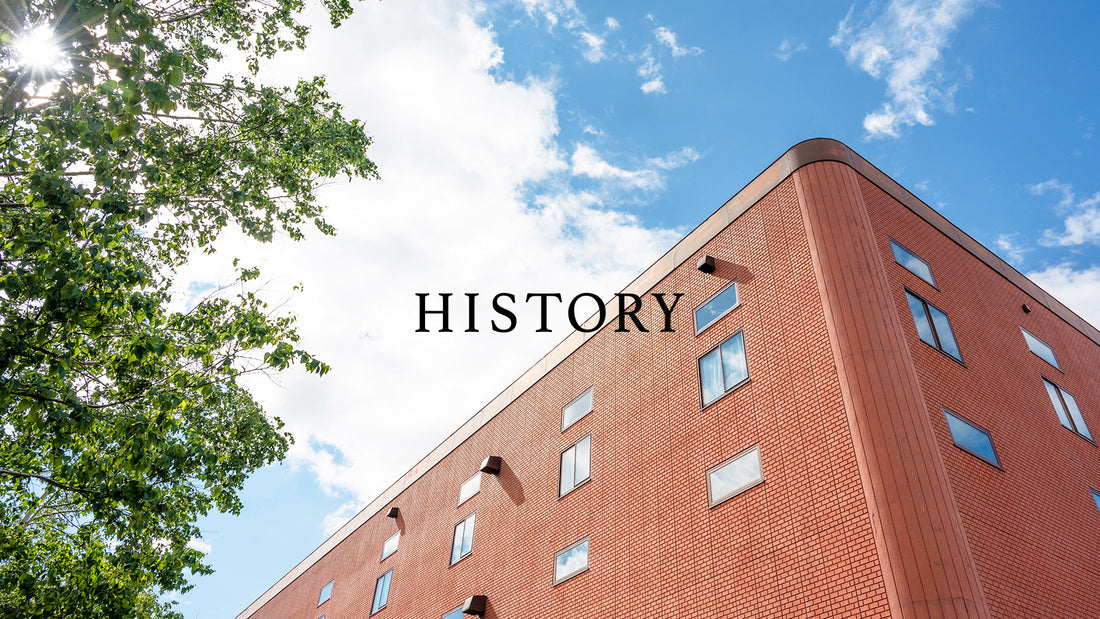

The founder, Ryusaku Shinkawa, worked at a long-established bag wholesaler in Osaka, where he directly dealt with bags while feeling a connection with customers through warehouse management, product display, and purchasing. Utilizing that experience, in 1940 he opened Shinkawa Shoten, a wholesale bag manufacturing company.
However, at the time, Japan was rapidly heading down the path to war. During the war, Shinkawa Shoten was forced to close down due to his own conscription, and when the city of Osaka was destroyed by air raids, Shinkawa Shoten shared its fate.
In 1950 , after the end of the war, we established a new company, Shinsenryu Shoten Co., Ltd. The company began a new chapter in its history in a difficult financial situation, with restrictions on the control and free manufacture and sale of leather products.

In 1953 , Toray developed the ``Toray Nylon Bag,'' which was made from nylon, which was a high-quality material at the time and had just been released by Toray. It was hailed as a major revolution that changed the history of bags, and became a symbol of the times.
In 1960 , when television began broadcasting in color, the company went to the United States and after repeated negotiations, concluded a contract with Schwider Brothers (now Samsonite) as its sole distributor in Japan, and began producing suitcases and other items.
In addition, we have continued to take on new challenges, such as the release of the Toray Delacour Ace Bag, which uses a new synthetic leather jointly developed by Toray and Toyo Cross.
Ace Bag Co., Ltd. (currently Ace Luggage Co., Ltd.) was established as a production division in Kaisei-cho, Ashigarakami-gun, Kanagawa Prefecture. This is where Ace Luggage's journey begins.

In 1964 , the year the Tokyo Olympics began, a technical partnership agreement was concluded with Schwider Brothers (now Samsonite). The contract required government permission, and after repeated negotiations with various government agencies, it was finally realized, and it became an important milestone in the history of suitcases.
Production began with the classic attaché case, which was used in the movie `` 007 '' and immediately attracted attention. Liberalization of overseas travel has made it possible to travel overseas for sightseeing purposes, but in Japan there is still little overseas travel and domestic travel is popular, and it is difficult to afford imported luxury suitcases. We have worked hard to develop suitcases that are easy to use and of excellent quality.
Then, in 1967 , the Japanese-made suitcase Debonair went on sale nationwide. We have refined our manufacturing technology and succeeded in producing a product that we are proud of.
We will build a new factory building and invest in equipment to make it one of the largest factories in Japan capable of integrated production.

Shortly after the liberalization of overseas travel, coupled with the development of aviation, the number of people traveling overseas increased dramatically. The number of customers purchasing suitcases has also increased proportionately. In order to increase production, we acquired land in Akabira City, Hokkaido, which was enthusiastically invited to promote coal production, and began construction of a new factory.
Akabira City, Hokkaido is a cold region with deep snow and is surrounded by rich nature. Akabira City is close in latitude to Denver City, where the Samsonite Company was located, and the founder's memory of the beautiful nature that shines green, cleansed by the rain, and rational, efficient lines was etched in his memory when he crossed the ocean to inspect it. I decided on this location because of various connections, such as being impressed by the factory that I own, and my desire to brighten up the town, which has become clouded by the decline of the coal industry, and to contribute in some small way to the lives of the people living in the town. Ta.
In 1971 , the Hokkaido Akabira Plant began operations in Mojiri, Akabira City, Hokkaido, on the site of a former coal mine.
All manufacturing equipment was transferred from Odawara factory to Akahira factory. Production equipment was installed at the Akabira factory in Hokkaido, and the company name was changed from Ace Bag Co., Ltd. to Ace Luggage Co., Ltd. in 1976 . A beautiful, pure and clean factory surrounded by beautiful greenery, which was a dream of our founder for many years, continues to be maintained even today.
In 1988, we expanded our new office building and second factory, introduced new large-scale injection molding machines, and aimed for a production system of 40,000 units per month and 500,000 units per year, aiming to improve work efficiency and increase productivity. I did. After that, we consolidated our operations into an administration building, a production building, and a warehouse building, and currently operate in three buildings.

In 1996, we achieved a cumulative total of 10 million domestically produced suitcases. In 2004 , we canceled our 40 -year contract with Samsonite, and in 2005 we began manufacturing Proteca, a brand owned by Ace Corporation. In addition to suitcases, we also manufacture a variety of other products on contract, using our own equipment and the technology we have continued to refine.
We continue to refine our delicate and advanced techniques and repeatedly conduct various verifications to further improve quality. ACE Luggage's unique testing standards have been added to the testing content that has been ongoing since 1978, when testing equipment was introduced, and in 2006, the quality and strength verification department was renamed the ACE Technology Institute ( ATI ). Newly named. As of 2022 , we continue to produce high-quality products.
